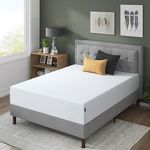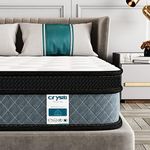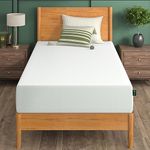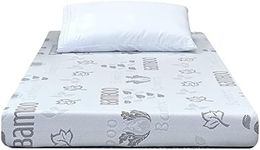Buying Guide for the Best Mattresses
Choosing the right mattress is essential for a good night's sleep and overall well-being. The best mattress for you depends on your sleeping habits, body type, and personal comfort preferences. When shopping for a mattress, it's important to understand the key features that affect comfort, support, and durability. By learning about these specifications, you can make a more informed decision and find a mattress that suits your unique needs.Mattress TypeMattress type refers to the materials and construction used, such as memory foam, innerspring, latex, or hybrid. This is important because each type offers a different feel and level of support. Memory foam mattresses contour to your body and are great for pressure relief, while innerspring mattresses provide a bouncier, more traditional feel. Latex mattresses are known for their durability and natural materials, and hybrids combine features of foam and springs. To choose the right type, consider your comfort preferences, whether you like a softer or firmer feel, and any allergies or sensitivities you may have.
Firmness LevelFirmness level describes how soft or hard a mattress feels when you lie on it. This is important because it affects your comfort and spinal alignment. Firmness is usually rated on a scale from soft to firm. Softer mattresses are often preferred by side sleepers or lighter individuals, as they cushion the shoulders and hips. Medium firmness is a good choice for most people, especially back sleepers, as it balances support and comfort. Firmer mattresses are better for stomach sleepers or heavier individuals, as they prevent sinking and keep the spine aligned. Think about your sleeping position and body weight to guide your choice.
Support and Pressure ReliefSupport refers to how well a mattress keeps your body aligned, while pressure relief is about reducing stress on your joints. These factors are important for preventing aches and pains. Mattresses with good support keep your spine in a natural position, and those with good pressure relief cushion areas like shoulders and hips. If you often wake up sore, look for a mattress that offers both support and pressure relief, which is often found in memory foam or hybrid models.
Motion IsolationMotion isolation is the mattress's ability to prevent movement from transferring across the bed. This is important if you share your bed with a partner, as it helps minimize disturbances when one person moves or gets up. Memory foam and latex mattresses usually offer better motion isolation, while innerspring mattresses may transfer more movement. If you are a light sleeper or share your bed, prioritize a mattress with good motion isolation.
Temperature RegulationTemperature regulation refers to how well a mattress stays cool or allows heat to escape. This is important if you tend to sleep hot or live in a warm climate. Some mattresses have cooling materials or designs that help with airflow, such as gel-infused foam or breathable covers. If you often wake up feeling too warm, look for a mattress with features that promote cooling and airflow.
Edge SupportEdge support is how stable and supportive the edges of the mattress feel when you sit or lie near them. This is important if you use the whole surface of the bed or have trouble getting in and out. Mattresses with strong edge support feel more secure and prevent sagging at the sides. If you like to sit on the edge or need extra stability, look for a mattress with reinforced edges.
Durability and LongevityDurability refers to how long a mattress maintains its comfort and support. This is important because a more durable mattress will provide better sleep for a longer time. Materials like latex and high-density foams tend to last longer, while lower-quality materials may wear out faster. If you want a mattress that will last for many years, pay attention to the quality of materials and construction.















